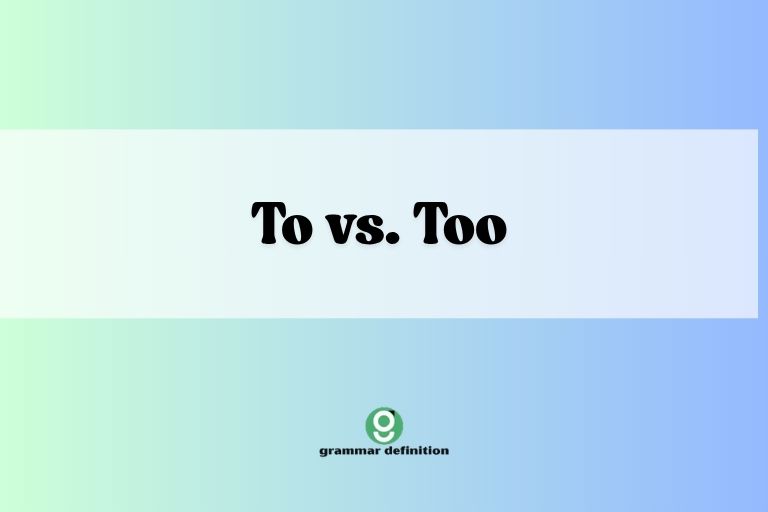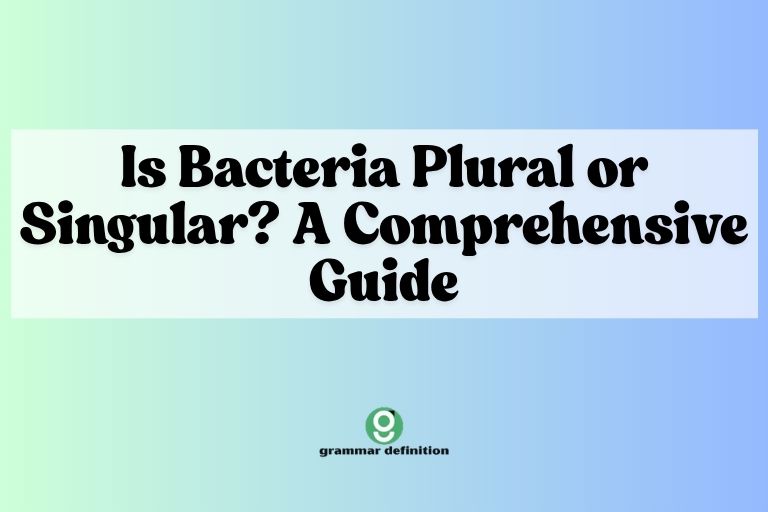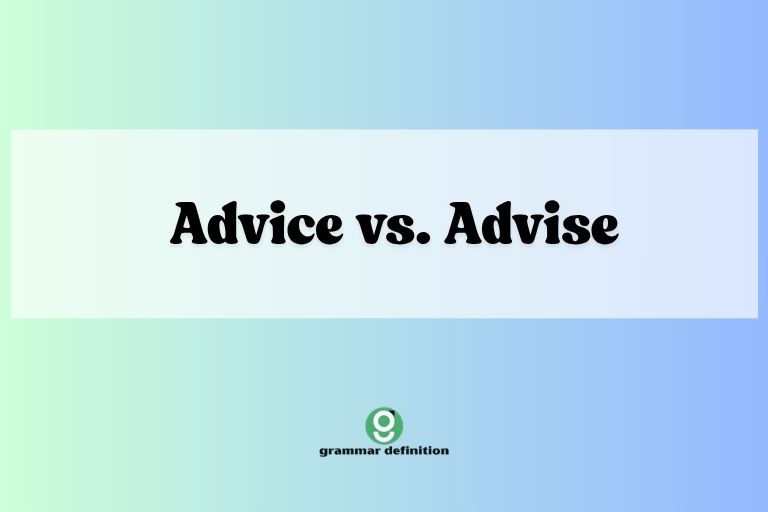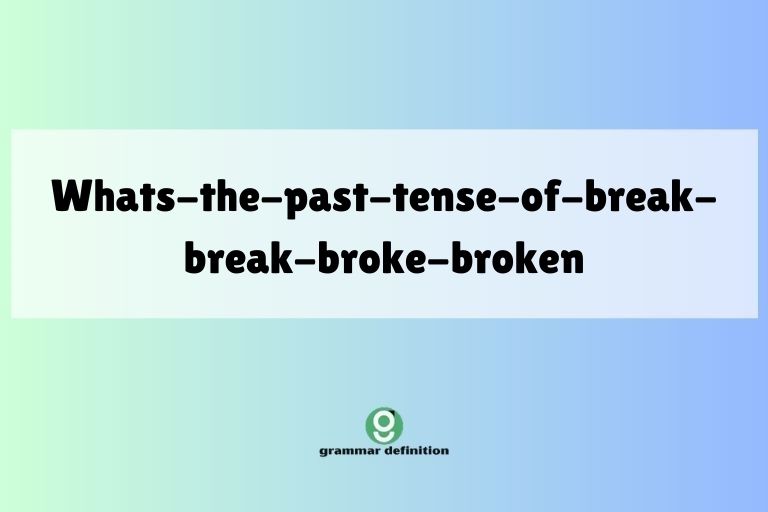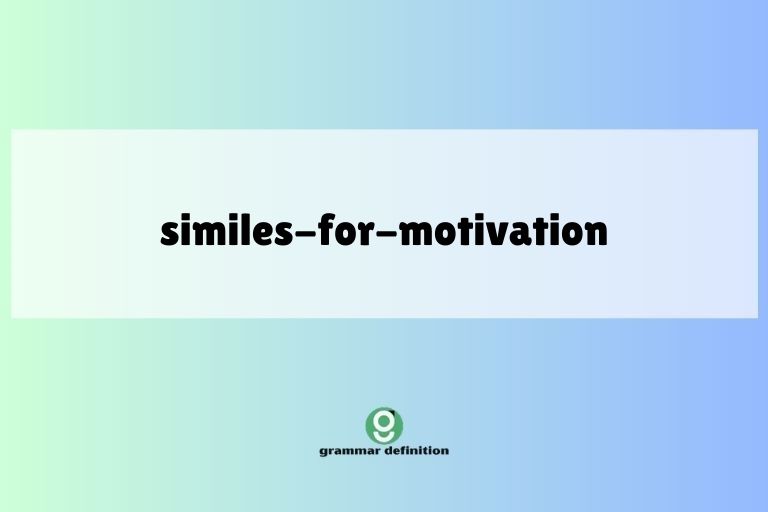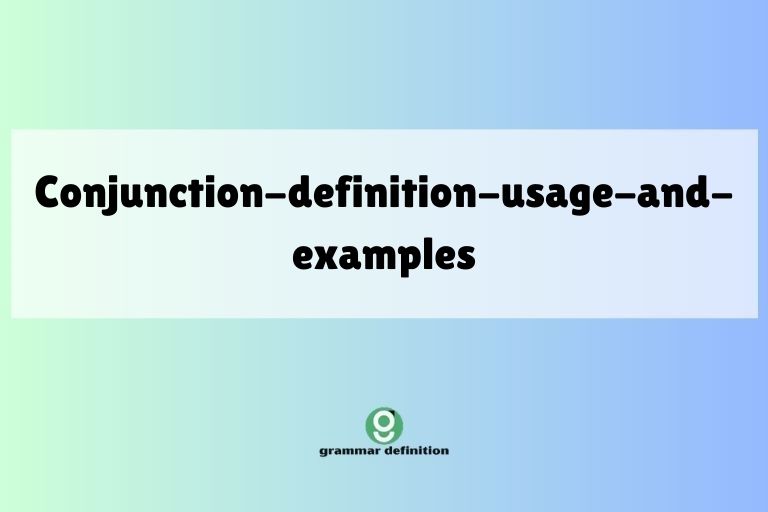Mastering the Comma: A Comprehensive Guide to Punctuation
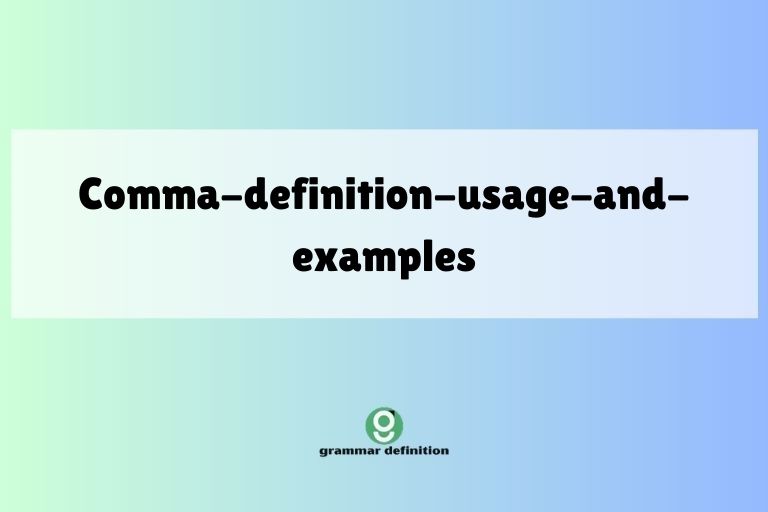
The comma, a seemingly small punctuation mark, plays a crucial role in English grammar. Its correct usage clarifies sentence structure, enhances readability, and prevents misinterpretations.
Mastering the comma is essential for effective written communication, whether you’re a student, a professional, or simply someone who wants to improve their writing skills. This comprehensive guide provides a detailed exploration of comma usage, covering its definition, various types, rules, common mistakes, and advanced applications.
By understanding and applying these principles, you can significantly elevate the clarity and precision of your writing.
This guide is designed for learners of all levels, from beginners seeking a foundational understanding to advanced writers aiming to refine their skills. Through clear explanations, numerous examples, and practical exercises, this article will equip you with the knowledge and tools necessary to confidently and accurately use commas in any writing context.
Table of Contents
- Definition of a Comma
- Structural Breakdown
- Types of Commas
- Examples of Comma Usage
- Comma Usage Rules
- Common Mistakes with Commas
- Practice Exercises
- Advanced Topics
- Frequently Asked Questions
- Conclusion
Definition of a Comma
A comma (,) is a punctuation mark that signals a brief pause within a sentence. It is used to separate elements within a sentence, such as words, phrases, or clauses, to improve clarity and readability. Unlike a period, which indicates the end of a sentence, a comma indicates a softer break, allowing the reader to process information in smaller, more manageable chunks. The comma’s function is primarily grammatical, helping to structure the sentence and guide the reader through its intended meaning. It also serves a stylistic purpose, influencing the rhythm and flow of the writing.
The comma is a versatile tool in the English language, and its proper usage is crucial for effective communication. Misplaced or omitted commas can lead to ambiguity, confusion, and even misinterpretation of the writer’s intended message.
Therefore, a thorough understanding of comma rules and conventions is essential for anyone who wants to write clearly and precisely.
Structural Breakdown
Understanding the structural role of a comma involves recognizing how it interacts with different sentence elements. A comma typically separates items in a list, sets off introductory phrases, encloses parenthetical information, and joins independent clauses with a coordinating conjunction.
The placement of a comma can significantly alter the meaning of a sentence. For instance, consider the difference between “Let’s eat, Grandma!” and “Let’s eat Grandma!” The comma saves Grandma’s life!
The comma also plays a crucial role in maintaining the flow of a sentence. By indicating a brief pause, it allows the reader to process information more easily.
This is particularly important in complex sentences with multiple clauses and phrases. Recognizing the structural function of the comma is the first step toward mastering its usage.
By understanding how it connects and separates different elements, you can ensure that your writing is clear, concise, and easy to understand.
Types of Commas
Commas are used in various contexts to serve different grammatical purposes. Understanding these different types can help you apply the correct comma rules in your writing.
Serial (Oxford) Comma
The serial comma, also known as the Oxford comma, is the comma that appears before the conjunction (usually “and” or “or”) in a list of three or more items. For example: “I need to buy milk, bread, and eggs.” The debate over whether to use the serial comma is ongoing, but its inclusion often enhances clarity and avoids ambiguity. While some style guides (like AP style) omit it, others (like Chicago style) recommend its use.
The serial comma is particularly useful when the items in a list are complex or could be misinterpreted as a single unit. For instance, consider the sentence: “I dedicate this book to my parents, Ayn Rand and God.” Without the serial comma, it might appear that Ayn Rand and God are the author’s parents.
The serial comma clarifies that these are three separate entities: “I dedicate this book to my parents, Ayn Rand, and God.”
Commas with Coordinate Adjectives
Coordinate adjectives are adjectives that modify the same noun equally. They can be separated by a comma. To determine if adjectives are coordinate, you can test whether you can insert “and” between them or reverse their order without changing the meaning of the sentence. For example, in the phrase “a tall, dark stranger,” “tall” and “dark” are coordinate adjectives because you could say “a tall and dark stranger” or “a dark, tall stranger.”
However, if the adjectives are not coordinate (i.e., one adjective modifies the noun, and the other modifies the adjective-noun combination), no comma is needed. For example, in the phrase “a beautiful old house,” “beautiful” modifies “old house,” so no comma is used.
Commas After Introductory Elements
An introductory element is a word, phrase, or clause that comes before the main clause of a sentence. A comma typically follows an introductory element to separate it from the main clause. This helps to clarify the sentence structure and improve readability. Common types of introductory elements include introductory words (e.g., “However,” “Therefore”), introductory phrases (e.g., “After the game,” “In the morning”), and introductory clauses (e.g., “Because it was raining,” “If you need help”).
The length and complexity of the introductory element can influence the necessity of the comma. Short, simple introductory elements may not always require a comma, but it is generally a good practice to include one for clarity, especially if the sentence could be misinterpreted without it.
For example, “In 1990 I was born” could be confusing without a comma: “In 1990, I was born.”
Commas with Parenthetical Elements
Parenthetical elements are words, phrases, or clauses that add extra information to a sentence but are not essential to its meaning. These elements are set off by commas (or sometimes dashes or parentheses). If the parenthetical element is removed, the sentence should still be grammatically correct and retain its core meaning. Examples of parenthetical elements include appositives (e.g., “My brother, John, is a doctor”), interjections (e.g., “This, I believe, is the best option”), and nonrestrictive clauses (discussed below).
The commas that set off parenthetical elements act like bookends, indicating where the element begins and ends. This helps to distinguish the parenthetical information from the main flow of the sentence and allows the reader to easily skip over it if desired.
For example: “The book, which I borrowed from the library, is due next week.”
Commas with Nonrestrictive Elements
Nonrestrictive elements, also known as nonessential elements, provide additional information about a noun but are not necessary to identify it. These elements are set off by commas. In contrast, restrictive elements are essential to the meaning of the sentence and are not set off by commas. For example, in the sentence “The dog that is barking is mine,” the clause “that is barking” is restrictive because it identifies which dog is being referred to. No commas are used.
However, in the sentence “My dog, who is a golden retriever, is very friendly,” the clause “who is a golden retriever” is nonrestrictive because it simply provides additional information about the dog, which is already identified as “My dog.” Commas are used to set off the nonrestrictive clause.
Commas with Coordinate Clauses
Coordinate clauses are independent clauses (clauses that can stand alone as sentences) that are joined by a coordinating conjunction (such as and, but, or, nor, for, so, or yet). A comma is typically placed before the coordinating conjunction to separate the two clauses. For example: “I wanted to go to the park, but it started to rain.”
However, if the coordinate clauses are very short and closely related, the comma may be omitted. For example: “He ran and she walked.” The use of the comma in this case is often a matter of stylistic preference, but it is generally recommended to include it for clarity, especially in longer or more complex sentences.
Commas in Dates, Addresses, and Titles
Commas are used in specific ways when writing dates, addresses, and titles. In dates, a comma separates the day of the month from the year: “July 4, 1776.” In addresses, a comma separates the street address from the city and the city from the state: “1600 Pennsylvania Avenue, Washington, D.C.” However, no comma is used between the state and the zip code.
When a title or degree follows a person’s name, it is typically set off by commas: “Jane Doe, PhD, is a professor at the university.” These conventions help to ensure clarity and consistency in written communication.
Examples of Comma Usage
To further illustrate the different types of comma usage, here are several examples organized by category.
Serial Comma Examples
The following table provides examples of sentences with and without the serial comma. Notice how the serial comma can sometimes improve clarity.
| With Serial Comma | Without Serial Comma |
|---|---|
| I like apples, bananas, and oranges. | I like apples, bananas and oranges. |
| We invited the clowns, the acrobats, and the jugglers. | We invited the clowns, the acrobats and the jugglers. |
| For breakfast, I had eggs, bacon, and toast. | For breakfast, I had eggs, bacon and toast. |
| She packed her bags with clothes, shoes, and toiletries. | She packed her bags with clothes, shoes and toiletries. |
| The flag is red, white, and blue. | The flag is red, white and blue. |
| The recipe calls for flour, sugar, and butter. | The recipe calls for flour, sugar and butter. |
| He enjoys reading books, watching movies, and playing games. | He enjoys reading books, watching movies and playing games. |
| The store sells hats, scarves, and gloves. | The store sells hats, scarves and gloves. |
| She needs to buy milk, bread, and cheese. | She needs to buy milk, bread and cheese. |
| The students studied math, science, and history. | The students studied math, science and history. |
| I visited Paris, Rome, and London. | I visited Paris, Rome and London. |
| We need to order paper, pens, and folders. | We need to order paper, pens and folders. |
| The garden has roses, tulips, and lilies. | The garden has roses, tulips and lilies. |
| The team consists of John, Mary, and David. | The team consists of John, Mary and David. |
| The menu includes soup, salad, and sandwiches. | The menu includes soup, salad and sandwiches. |
| She likes to listen to music, dance, and sing. | She likes to listen to music, dance and sing. |
| The presentation covered marketing, sales, and finance. | The presentation covered marketing, sales and finance. |
| The company offers health, dental, and vision insurance. | The company offers health, dental and vision insurance. |
| The project requires research, planning, and execution. | The project requires research, planning and execution. |
| I am thankful for my family, friends, and health. | I am thankful for my family, friends and health. |
| The country is famous for its beaches, mountains, and deserts. | The country is famous for its beaches, mountains and deserts. |
| The museum features paintings, sculptures, and artifacts. | The museum features paintings, sculptures and artifacts. |
| The concert included rock, pop, and jazz music. | The concert included rock, pop and jazz music. |
| The professor teaches literature, history, and philosophy. | The professor teaches literature, history and philosophy. |
| The athlete trains in running, swimming, and cycling. | The athlete trains in running, swimming and cycling. |
| The software supports Windows, macOS, and Linux. | The software supports Windows, macOS and Linux. |
| The volunteer organization helps children, adults, and seniors. | The volunteer organization helps children, adults and seniors. |
| He brought pens, paper, and notebooks to the meeting. | He brought pens, paper and notebooks to the meeting. |
| The company sells products in Asia, Europe, and Africa. | The company sells products in Asia, Europe and Africa. |
Coordinate Adjectives Examples
This table demonstrates the use of commas with coordinate adjectives.
| Coordinate Adjectives (Comma Required) | Non-Coordinate Adjectives (No Comma) |
|---|---|
| She lived in a large, comfortable house. | He drove a fast sports car. |
| The sky was a clear, blue expanse. | She wore a beautiful silk dress. |
| He was a kind, generous man. | They lived in a small brick house. |
| It was a long, difficult journey. | He read an interesting science book. |
| She had a bright, cheerful smile. | She carried a large brown bag. |
| The movie was a funny, entertaining comedy. | He bought a new dining table. |
| The weather was warm, sunny, and pleasant. | She adopted a cute little puppy. |
| He wrote a thoughtful, insightful essay. | He built a sturdy wooden fence. |
| She wore a stylish, elegant hat. | She found a valuable antique coin. |
| The coffee was strong, hot, and flavorful. | He climbed a tall oak tree. |
| The garden was filled with colorful, fragrant flowers. | She ordered a delicious chocolate cake. |
| The presentation was clear, concise, and informative. | He painted a stunning landscape picture. |
| The meal was delicious, satisfying, and affordable. | She received a precious family heirloom. |
| The book was engaging, thought-provoking, and well-written. | He designed a modern office building. |
| The project was challenging, rewarding, and successful. | She explored an ancient Roman ruin. |
| The experience was exciting, memorable, and transformative. | He wrote a compelling short story. |
| The atmosphere was relaxed, friendly, and welcoming. | She learned a useful computer skill. |
| The conversation was stimulating, informative, and enjoyable. | He purchased a comfortable leather chair. |
| The performance was captivating, mesmerizing, and unforgettable. | She visited a famous art museum. |
| The product was innovative, reliable, and user-friendly. | He discovered a hidden underground cave. |
| The service was efficient, courteous, and professional. | She found a rare vintage record. |
| The event was well-organized, enjoyable, and successful. | He drove an expensive luxury car. |
| The solution was simple, effective, and sustainable. | She wore a beautiful summer dress. |
| The design was elegant, modern, and functional. | He built a strong retaining wall. |
| The atmosphere was calm, peaceful, and serene. | She explored a vast national park. |
| The food was fresh, flavorful, and healthy. | He wrote a detailed technical report. |
| The music was upbeat, energetic, and danceable. | She learned a new foreign language. |
| The technology was advanced, innovative, and groundbreaking. | He designed a sustainable green building. |
| The approach was creative, strategic, and results-oriented. | She discovered a fascinating ancient artifact. |
| The outcome was positive, significant, and long-lasting. | He purchased a reliable used vehicle. |
Introductory Elements Examples
The following table illustrates the use of commas after introductory elements.
| Introductory Element | Sentence |
|---|---|
| However | However, I disagree with your assessment. |
| In the morning | In the morning, I like to drink coffee. |
| Because it was raining | Because it was raining, we stayed inside. |
| After the game | After the game, we went out for pizza. |
| Therefore | Therefore, we must take action immediately. |
| Despite the challenges | Despite the challenges, we persevered. |
| To be honest | To be honest, I don’t know the answer. |
| Before leaving | Before leaving, make sure to turn off the lights. |
| If you need help | If you need help, please don’t hesitate to ask. |
| Once upon a time | Once upon a time, there was a princess. |
| As a result | As a result, the project was a success. |
| In addition | In addition, we need to consider other factors. |
| Although it was difficult | Although it was difficult, we managed to finish on time. |
| During the meeting | During the meeting, we discussed several important issues. |
| For example | For example, consider the following scenario. |
| In conclusion | In conclusion, we recommend the following actions. |
| On the other hand | On the other hand, there are potential drawbacks. |
| To summarize | To summarize, we have covered the main points. |
| When I arrived | When I arrived, everyone was already there. |
| While I was waiting | While I was waiting, I read a book. |
| Since it was cold | Since it was cold, I wore a jacket. |
| Unless you hurry | Unless you hurry, you will be late. |
| Until I see it | Until I see it, I won’t believe it. |
| Because I was tired | Because I was tired, I went to bed early. |
| As soon as possible | As soon as possible, please send me the report. |
| Even though it was raining | Even though it was raining, we went for a walk. |
| If you agree | If you agree, we can proceed with the plan. |
| Before you leave | Before you leave, please sign the guest book. |
| After you finish | After you finish, you can take a break. |
| Though it was challenging | Though it was challenging, we learned a lot. |
Comma Usage Rules
Here’s a summary of the main rules governing comma usage:
- Use a comma to separate items in a list. (e.g., I need to buy milk, bread, and eggs.)
- Use a comma to separate coordinate adjectives. (e.g., She lived in a large, comfortable house.)
- Use a comma after an introductory element. (e.g., However, I disagree with your assessment.)
- Use commas to set off parenthetical elements. (e.g., My brother, John, is a doctor.)
- Use commas to set off nonrestrictive elements. (e.g., My dog, who is a golden retriever, is very friendly.)
- Use a comma before a coordinating conjunction joining two independent clauses. (e.g., I wanted to go to the park, but it started to rain.)
- Use commas in dates, addresses, and titles. (e.g., July 4, 1776; 1600 Pennsylvania Avenue, Washington, D.C.; Jane Doe, PhD.)
These rules provide a solid foundation for correct comma usage. However, it’s important to remember that there are exceptions and nuances to these rules, and careful judgment is sometimes required.
Common Mistakes with Commas
Even experienced writers sometimes make mistakes with commas. Here are some common errors to avoid:
- Comma Splices: Joining two independent clauses with only a comma (e.g., Incorrect: I went to the store, it was closed. Correct: I went to the store, but it was closed.)
- Incorrect use of commas with restrictive clauses: Using a comma to set off a restrictive clause (e.g., Incorrect: The book, that I borrowed from the library, is due next week. Correct: The book that I borrowed from the library is due next week.)
- Missing commas after introductory elements: Omitting the comma after an introductory phrase or clause (e.g., Incorrect: After the game we went out for pizza. Correct: After the game, we went out for pizza.)
- Overusing commas: Using commas unnecessarily, which can disrupt the flow of the sentence (e.g., Incorrect: The, quick, brown, fox, jumped. Correct: The quick brown fox jumped.)
By being aware of these common mistakes, you can improve the accuracy and clarity of your writing.
Practice Exercises
Test your understanding of comma usage with these practice exercises. Identify where commas are needed in the following sentences.
- I like to eat apples bananas and oranges.
- However I disagree with your opinion.
- My brother John is a doctor.
- The dog that is barking is mine.
- I wanted to go to the beach but it started to rain.
- July 4 1776 was a significant day.
- She lived in a large comfortable house.
- After the movie we went for ice cream.
- The book which I borrowed from you is great.
- He ran and she walked.
Answer Key
- I like to eat apples, bananas, and oranges.
- However, I disagree with your opinion.
- My brother, John, is a doctor.
- The dog that is barking is mine.
- I wanted to go to the beach, but it started to rain.
- July 4, 1776, was a significant day.
- She lived in a large, comfortable house.
- After the movie, we went for ice cream.
- The book, which I borrowed from you, is great.
- He ran and she walked.
Exercise 2: Add commas where necessary in the following paragraph.
Last summer I visited Europe. I went to Paris Rome and London.
Paris was beautiful Rome was historical and London was exciting. However the trip was expensive.
I had to save money for a long time. I am planning another trip next year.
I hope to visit Spain Italy and Greece. These countries are known for their culture history and food.
I am excited to explore new places try new foods and learn about different cultures.
Answer:
Last summer, I visited Europe. I went to Paris, Rome, and London.
Paris was beautiful, Rome was historical, and London was exciting. However, the trip was expensive.
I had to save money for a long time. I am planning another trip next year.
I hope to visit Spain, Italy, and Greece. These countries are known for their culture, history, and food.
I am excited to explore new places, try new foods, and learn about different cultures.
Advanced Topics
For advanced learners, here are some more complex aspects of comma usage:
- Commas with conjunctive adverbs: Conjunctive adverbs (e.g., however, therefore, nevertheless) often require commas before and after them when they interrupt the flow of an independent clause. The placement of the commas depends on the context and the desired emphasis.
- Commas in complex sentences: Complex sentences with multiple clauses can be challenging to punctuate correctly. Pay close attention to the relationships between the clauses and use commas to clarify the structure.
- Stylistic comma usage: In some cases, comma usage is a matter of stylistic preference. Consider your audience and the overall tone of your writing when making these decisions.
Mastering these advanced topics will further enhance your ability to use commas effectively and precisely.
Frequently Asked Questions
- What is a comma splice, and how can I avoid it?
A comma splice occurs when two independent clauses are joined together with only a comma. To avoid comma splices, you can separate the clauses with a period, a semicolon, or a comma followed by a coordinating conjunction (and, but, or, nor, for, so, yet). For example, instead of writing “I went to the store, it was closed,” you could write “I went to the store; it was closed” or “I went to the store, but it was closed.”
- When is it okay to omit the serial comma?
Some style guides (like AP style) omit the serial comma, while others (like Chicago style) recommend its use. The decision to use or omit the serial comma is often a matter of stylistic preference. However, it is generally recommended to include the serial comma when it enhances clarity or avoids ambiguity. For example, if the items in a list are complex or could be misinterpreted as a single unit, the serial comma is particularly useful.
- How can I tell if adjectives are coordinate and require a comma?
To determine if adjectives are coordinate, you can test whether you can insert “and” between them or reverse their order without changing the meaning of the sentence. If you can, the adjectives are coordinate and should be separated by a comma. For example, in the phrase “a tall, dark stranger,” “tall” and “dark” are coordinate adjectives because you could say “a tall and dark stranger” or “a dark, tall stranger.”
- Do I always need a comma after an introductory element?
While it is generally recommended to use a comma after an introductory element, the necessity of the comma can depend on the length and complexity of the element. Short, simple introductory elements may not always require a comma, but it is generally a good practice to include one for clarity, especially if the sentence could be misinterpreted without it.
- What is the difference between restrictive and nonrestrictive clauses, and how do commas affect them?
Restrictive clauses are essential to the meaning of the sentence and are not set off by commas. Nonrestrictive clauses provide additional information about a noun but are not necessary to identify it and are set off by commas. For example, in the sentence “The dog that is barking is mine,” the clause “that is barking” is restrictive because it identifies which dog is being referred to. However, in the sentence “My dog, who is a golden retriever, is very friendly,” the clause “who is a golden retriever” is nonrestrictive because it simply provides additional information about the dog, which is already identified as “My dog.”
- What are conjunctive adverbs and how do commas interact with them?
Conjunctive adverbs (e.g., however, therefore, nevertheless, consequently) are words that connect two independent clauses, showing the relationship between them. When a conjunctive adverb is used to join two independent clauses, it is usually preceded by a semicolon and followed by a comma. For example: “The weather was terrible; therefore, we stayed inside.” If the conjunctive adverb interrupts a single clause, it is typically set off by commas on both sides: “The project, however, was a success.”
- Are there any exceptions to the rule about using a comma before a coordinating conjunction joining two independent clauses?
Yes, if the two independent clauses are very short and closely related, the comma may be omitted. For example: “He ran and she walked.” However, it is generally recommended to include the comma for clarity, especially in longer or more complex sentences.
- How do I know when I’m overusing commas?
If your sentences feel choppy or disjointed, or if you find yourself pausing frequently while reading your writing aloud, you may be overusing commas. Try reading your writing aloud and paying attention to where you naturally pause. If you have commas in places where you wouldn’t naturally pause, they may be unnecessary.
Conclusion
Mastering the comma is an essential skill for effective written communication. By understanding the different types of commas, their usage rules, and common mistakes to avoid, you can significantly improve the clarity, precision, and readability of your writing.
Remember to practice regularly and pay close attention to the context in which you are using commas.
This comprehensive guide has provided you with a solid foundation for comma usage. Continue to refine your skills by reading widely, analyzing the writing of others, and seeking feedback on your own writing.
With practice and attention to detail, you can confidently and accurately use commas to enhance the quality of your writing and communicate your ideas effectively.

